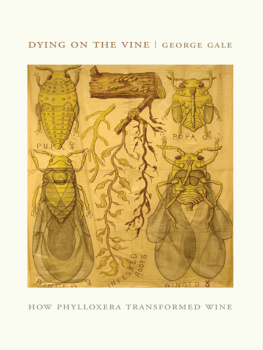TABLE OF CONTENTS
Guide
Novels for Students, Volume 31
Project Editor: Sara Constantakis
Rights Acquisition and Management: Jennifer Altschul, Margaret Chamberlain-Gaston, Leitha Etheridge-Sims, Kelly Quin
Composition: Evi Abou-El-Seoud
Manufacturing: Drew Kalasky
Imaging: John Watkins
Product Design: Pamela A. E. Galbreath, Jennifer Wahi
Content Conversion: Katrina Coach
Product Manager: Meggin Condino
2010 Gale, Cengage Learning
ALL RIGHTS RESERVED. No part of this work covered by the copyright herein may be reproduced, transmitted, stored, or used in any form or by any means graphic, electronic, or mechanical, including but not limited to photocopying, recording, scanning, digitizing, taping, Web distribution, information networks, or information storage and retrieval systems, except as permitted under Section 107 or 108 of the 1976 United States Copyright Act, without the prior written permission of the publisher.
Since this page cannot legibly accommodate all copyright notices, the acknowledgments constitute an extension of the copyright notice.
For product information and technology assistance, contact us at Gale Customer Support, 1-800-877-4253.
For permission to use material from this text or product, submit all requests online at www.cengage.com/permissions.
Further permissions questions can be emailed to permissionrequest@cengage.com
While every effort has been made to ensure the reliability of the information presented in this publication, Gale, a part of Cengage Learning, does not guarantee the accuracy of the data contained herein. Gale accepts no payment for listing; and inclusion in the publication of any organization, agency, institution, publication, service, or individual does not imply endorsement of the editors or publisher. Errors brought to the attention of the publisher and verified to the satisfaction of the publisher will be corrected in future editions.
Gale
27500 Drake Rd.
Farmington Hills, MI, 48331-3535
ISBN-13: 978-1-4144-4169-6
ISBN-10: 1-4144-4169-X
ISSN 1094-3552
This title is also available as an e-book.
ISBN-13: 978-1-4144-4947-0
ISBN-10: 1-4144-4947-X
Contact your Gale, a part of Cengage Learning sales representative for ordering information.
Printed in the United States of America
1 2 3 4 5 6 7 14 13 12 11 10
The Scarlet Pimpernel
Emmuska Orczy
1905
Introduction
The Scarlet Pimpernel, an archetypal adventure tale by Baroness Emmuska Orczy set in the period leading up to the French Revolution's Reign of Terror, was produced as a play before being published as a novel in 1905, with resounding success. Capturing the popular imagination, the work spawned a successful series for its author and has been repeatedly adapted for film and televisionalso recently becoming a Broadway musicalin the century since its publication. The story's renown can be attributed to its highly original notion of a superhero with a secret identity, adapted by many later writers; its well choreographed dialogue and plot, reflecting Orczy's greater critical success as an author of detective fiction; and the suspenseful pace, fueled by the ever-present urgency and danger characteristic of revolution.
In contrast to the swordplay and violence of the film versions, the novel features little actual action and derives much of its power from the theatrical strength of the characters. The Scarlet Pimpernel, the character for whom the work is named, is of course designed to be the source of most of the intrigue; his identity is revealed half-way through the novel, under circumstances that allow for a strikingly gradual revelation on the part of both his wife, Lady Blakeney (Marguerite), and the reader. Percy Blakeney's classical heroic qualities are well masked by seeming laziness, foolishness, and even stupidity. Marguerite, in turn, not only provides the eyes and ears through which the reader follows most of the plot but also serves as a primary agent of narrative action. Her decisions, which are comprehensively examined under a moral lens, are what drive the tale. By the end of the novel, only a cynically detached reader could fail to feel sympathy for the hero and heroine and to rejoice in their ethical and humanitarian success.
Author Biography
Emmuska Magdalena Rosalia Maria Josefa Barbara Orczy was born on September 23, 1865, in Tarna-rs, Hungary. Her father, Baron Felix Orczy, was a conductor and composer and owned a significant estate, worked by peasants. Baron Orczy sought to modernize his farming operations by introducing machinery, but the peasants resisted, out of both superstition and concern for their livelihood. When Emmuska (also called Emma) was only three, during a party for her five-year-old sister, the peasants burned down the estate, inducing the family to leave the estate. Drifting through western Europe over the years, they stayed in Budapest, Brussels, and Paris before ending up in London when Orczy was fifteen.
Through her schooling, Orczy found herself leaning toward the arts, in part because her father's aristocratic standards did not leave much room for his daughters to pursue other sorts of careers. Her father encouraged interest in music, but she did not have a gifted ear; she instead developed a love for painting and drawing but eventually focused professionally on writing. As she details in her autobiography, Links in the Chain of Life (1947), Orczy learned much about the craft of storytelling through her devotion to attending the theater. As noted by Sarah Juliette Sasson in her introduction to The Scarlet Pimpernel, Orczy professes being especially fond of the "unsophisticated productions," at which crowds tended to be more casually and honestly responsive to the onstage actionoften quite vocallyallowing her to study the effects of the various turns of tales on audiences.
In the early stages of her career, Orczy penned detective stories, some published in Royal Magazine, and a pair of novels. The first, The Emperor's Candlesticks (1899), being received poorly and the next, In Mary's Reign (1901), faring decently. Then, one day while waiting for an underground train, Orczy found herself clearly visualizing the character of Percy Blakeney, from his fashionable garments to his thin hands to his lazy manner of speech. It took quite a bit of effort to find a publisher willing to take a risk on what would become her most famous work; only after Orczy and her husband, Montague Barstow, adapted the work as a play and saw it brought to the stage in London, in 1905, did The Scarlet Pimpernel finally get published in book form, also in 1905. The stage version was critically panned but eventually became a success with audiences, while the novel was immediately popular.
Orczy went on to write more than a dozen Scarlet Pimpernel stories, as well as a tale of an adventurous ancestor of Blakeney's, The Laughing Cavalier (1913). She gained greater critical appreciation for her detective stories, particularly those featuring the title character of the 1909 collection The Old Man in the Corner. The old man, who reads about cases in newspapers and gets additional clues from a journalist friend, is recognized as one of literature's earliest "armchair detectives," never leaving his seat to solve mysteries. Orczy also created a similarly pioneering but less popular female detective in





















